Brtonigla Mushroom Days Attract Domestic and Foreign Guests
As Glas Istre/Luka Jelavic writes on the 28th of October, 2019 twelve mushroom associations with more than two hundred mushrooms, mostly from Istria and other parts of Croatia (Karlovac, Rijeka, Sesvete), Slovenia (Sežana) and Italy (Muggia, Vicenza, Trieste), participated in the competition in search and collection of mushrooms and in other contents of this year's manifestation "Mushroom Days" held in Brtonigla.
Everyone agrees that this is the largest such event, not only in Brtonigla and Istria, but also in Croatia, both in terms of the sheer number of participants and in terms of the number of visitors. The nice weather also made things run smoothly, which delighted all those present.
At the official opening of the 17th edition of the Brtonigla event, the participants were greeted by the heads of the Tourism and Agriculture Departments of Istria County.
On the first day of the manifestation, after the official opening, those there in a professional capacity went in search of mushrooms. The areas were chosen by the participants themselves as the primary aim was to find the most beautiful and largest mushroom and to prepare the most beautiful basket filled with mushrooms and other decorations nature brings during autumn.
Upon the return of all the participants, after hours of searching and collecting "forest meat", a special committee decided that the most beautiful mushroom was brought by the Bresadol mushroom team from Trieste, while the biggest mushroom, a 12 kg specimen, brought by the team from Vicenze (Italy). Members of the mushroom association from Sežana arranged the most beautiful basket full of mushrooms, and they also received the same recognition last year.
A large exhibition of mushrooms with 230 specimens of edible, inedible and poisonous mushrooms, collected mainly in the Bujština area, was prepared in a large tent, where the scent of mushroom scents spread quickly. Visitors were interested in getting better acquainted with the mushrooms that were described, with their names and characteristics, and this was an opportunity to learn something new and to get to know a part of the world of above-ground mushrooms.
The picking season has been good and there have been plenty of mushrooms, as seen in the exhibition which was prepared by certain members. Along with mushrooms, art and other works of elementary school students and kindergarten students from Brtonigla on the topic of mushrooms were also showcased.
Make sure to follow our dedicated lifestyle page for much more.
Poreč Citizens to Plant 300 Trees in Praiseworthy Istrian Eco Action
As Glas Istre writes on the 24th of October, 2019, the popular Istrian city of Poreč also joined the praiseworthy Collective Tree Planting national campaign, and planting trees across all local committees has been going on since the beginning of the week. The city budget has been reserved for this action, and the staff of the Poreč utility company have readily joined the project, and they're busy developing planting material and helping to plant and properly fertilise the trees to ensure they take and grow correctly.
To get as many citizens involved in this laudable action as possible, on Friday, October the 25th, starting at 09:00, over 300 seedlings of native trees will be distributed free of charge to all interested citizens in the city's big car park for people to go and plant in their respective areas.
After taking the seedlings, citizens will leave their information, and everyone is invited to submit photos of the trees planted to the email address This email address is being protected from spambots. You need JavaScript enabled to view it., in order to see how many trees have been planted, and where their locations are in the area of the Istrian city following the completion of the action.
More than 500 trees will be planted during the action in Poreč, such as laurel, lignon, pine, conifer, chestnut, fig, almond and other species.
To briefly recall, the opening of the group ''Days of collective tree planting in Croatia on the 25th, 26th and 27th of October, 2019'' took place on Facebook not so long ago. Since, a highly commendable action has been launched, with over 15,000 people joining in just a few days, and that number is now much higher, with many cities across the Republic of Croatia joining the action.
Make sure to follow our dedicated lifestyle page for much more. If you're interested in both official and unofficial ways that Croatia works to try to protect the environment, give Total Eco Croatia a follow.
Novigrad Welcomes Croatia's First State-of-the-Art Oil Mill, Nothing Like it Within 500 km
October 17, 2019 - The Al Torcio oil mill in Novigrad, owned by olive grower Karmin Beletic, welcomed the first state-of-the-art olive oil mill in Croatia.
Glas Istre caught up with Beletic, who explained the technology and all its benefits. For example, how the cooling system allows 30 percent more polyphenols to remain in the oil.
“There is no such modernized oil mill within 500 kilometers, or even in parts of northern Italy, so I am flattered that the first state-of-the-art mill was opened in Istria, known as the best olive oil region in the world,” said Beletic.
The newest technology on the market today comes from DMF Pieralisi. The mixers of their Molinova ORO series, in combination with the mill, cools the olive paste during production, thus, making it one of the most modern machines in the world.
Namely, when grinding the olives, their temperature in the mill is further increased by another four to five degrees due to the friction of the particles, which negatively affects the quality and preservation of the oil values. Thus, the cooling system enables temperature control and allows the olive paste to be cooled.
“Another exception to this oil mill is that it uses DMF technology - the Leopard 5 decanter, with a processing capacity of two tonnes per hour, that is, a multiphase decanter, which means that it is done in several stages. Previous machines worked in two or three phases, and each of these processes had its advantages and disadvantages. This processing method combines all the best of both phases mentioned above,” said Beletic.
The great novelty is also that no water is added to the process itself, so the polyphenols contained in the olive paste are not melted in water. Thus, up to 30 percent more polyphenols in the oil are retained in this way.
At the same time, the problem of disposing of the later formed olive vegetation water, which is a high burden for each oil mill, is also solved.
“Another special feature is our certificate for organic production. Namely, the oil mill has four mixers of 800 liters each, in which four batches of oil from four different manufacturers can be processed, which allows us to wash the system between processing. Thus, there are no remnants from previous producers, which gives everyone their own and pure organic oil,” Beletic concluded.
You can see photos of the new oil mill in Novigrad here.
To read more about lifestyle in Croatia, follow TCN's dedicated page.
Flos Olei Names Istria the World's Best Olive Oil Region, Again!
October 15, 2019 - Flos Olei, the world's most influential and extensive guide to the world of olive oil, has declared Istria the world's best olive oil region, again!
Namely, the northern Croatia region of Istria has once again been recognized for its olive oil, further establishing Croatia and this region as a relevant destination for international gastronomy.
HRTurizam writes that the popular Flos Olei 2020 publication, considered the bible of olive oil, lists as many as 79 oils from Croatia among the top 500 olive oils in the world. Of the total, 77 olive growers are from Istria, with one each from Dalmatia and Primorje-Gorski Kotar County.
For five years in a row, Istria has boasted the most olive oils in the Flos Olei publication.
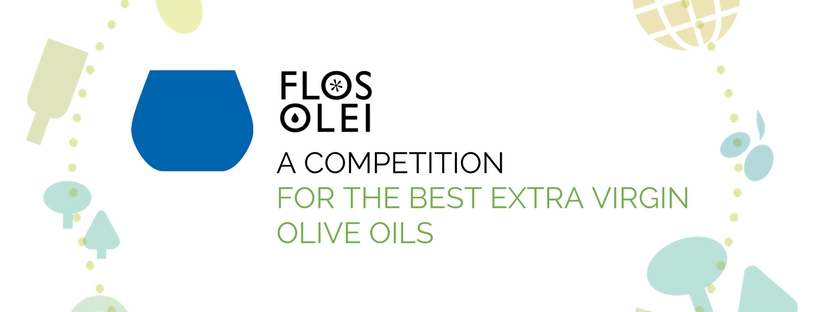
Out of the maximum 100 points, three olive oils from Istria (Ipša, Mate and Olea B. B.) scored an impressive 98 points.
This is once again an immeasurable success for Istria, where the tradition of olive growing has lasted more than two millennia.
Plava Kamenica writes that Istrian oils are the base of the triangle that must form Croatia’s international gastronomic identity. The other two elements of that identity are, as they say, white truffles and Kvarner shrimp. Based on this triangle, which has an unconditional international gastronomic value, other elements of Croatia’s gastronomic identity can be affirmed: from tuna and other fish to cheeses, black Slavonian pigs and more.
Plava Kamenica continues that the truly sensational success of Istrian olive oils is as essential for the international affirmation of Croatian gastronomy as Michelin stars.
Now, this fantastic result should be promoted by all possible channels - not just in gastronomy and tourism. They add that it is high time for Istrian oils to become part of Croatia's diplomatic legitimacy; whoever officially represents Croatia in the world should also serve it with Istrian oils.
You can see the Flos Olei 2020 guide of the 500 best olive oils in the world here.
To read more about lifestyle in Croatia, follow TCN’s dedicated page.
IDS Leader Slams Italian Neo-Fascists' Provocation, D'Annunzio Statue
ZAGREB, September 14, 2019 - Istrian Democratic Party (IDS) president Boris Miletic on Saturday condemned "the sad and sorry provocation by a group of Italian neo-fascists, who recently hung the Kingdom of Italy flag on the Governor's Palace in Rijeka," saying "the world is and will be going forward, no matter how much someone tries to turn back time."
"Fascism is a reactionary and defeated ideology, and Istria, which unfortunately experienced the whole evil of fascism, is the last place in the world where the fascist idea could live again," he said in a press release.
Miletić said he was saddened that in Europe, which did not know borders for decades, there were still those who advocated changing state borders. "I believe this provocation best shows the caricature and irrelevance of such movements, whether they come from the Italian or the Croatian side."
As for the decision by the City of Trieste to unveil a monument to fascism originator Gabriele D'Annunzio on the centenary of his occupation of Rijeka, Miletić said it was absolutely incomprehensible.
"Any recognition of and attempt to downplay reactionary ideologies or state territorial claims certainly does not contribute to good neighbourly relations and is in complete opposition to Europe's values."
Miletić said the IDS had zero tolerance towards any form of fascism and that it would not keep quiet when someone "undermines the foundations of a modern, civic and open society."
He called on state authorities to condemn, clearly and in the strongest terms, yesterday's statements by the HVIDRA association of disabled war veterans, which condemned recent statements by Independent Democratic Serb Party (SDSS) leader Milorad Pupovac and called on the justice minister to say if those statements constituted a criminal offence and if by making them Pupovac had violated Croatian laws, noting that the SDSS was not desirable in Croatia and was not a relevant representative of the Serbs in the country.
More IDS news can be found in the Politics section.
Local Authorities Observe Anniversary of Decision to Join Istria to Croatia
ZAGREB, September 13, 2019 - Delegations o the Town of Pazin and local anti-Fascist associations on Friday laid a wreath outside the building in Pazin in which on 13 September 1943, the Istria committee of the People's Liberation Movement decided on reintegration of Istria in Croatia.
Addressing the ceremony, a representative of the anti-Fascist associations, Tomislav Ravnić, said that events and people who fought for joining Istria to Croatia should never be forgotten.
In that struggle, 17,000 Istrians died, which is far more than "in the Homeland War, which was imposed on us", Ravnić said underscoring that he did not want to diminish the suffering caused during the 1991-1995 war.
Ravnić said that he condemned in the harshest terms the unveiling of the monument to Gabriele D'Anunnzio in Trieste and public activities of neo-Fascists in Rijeka.
There is no excuse for such events as they glorify the irredentism and Fascism, he added.
In September 1919 D'Annunzio proclaimed Rijeka as an independent state called the Italian Regency of Carnaro.
More info about the Second World War can be found in the Politics section.
Istria County Assembly Chairman Honoured for Promoting Croatia-Italy Ties
ZAGREB, September 4, 2019 - The chairman of the Istria County Assembly, Valter Drandić, has been awarded a medal for promoting friendship and cooperation between Croatia and Italy.
Drandić was presented with the Ordine della Stella d'Italia (Order of the Star of Italy), with the title of Ufficiale (Officer), by the Rijeka-based Italian Consul-General Paolo Palmintieri at a ceremony in the Istria County capital of Pazin on Tuesday. The Order is conferred by the President of Italy.
Drandić said that this honour was a recognition of his work on connecting people in the two countries. He added that although some of the projects had failed, he was ultimately pleased with the results of cooperation.
Speaking of relations between Croatia and Italy, Drandić cited Croatia's bid to join the Schengen area, the connection of the two countries by a motorway and the modernisation of the railway as the most important projects in Istria that would better connect the people and economies of the two countries.
Palmintieri thanked Drandić for his tireless work on promoting ties between the two countries, noting that Drandić had promoted the twinning of several Istrian towns, such as Buzet, Vodnjan, Svetvinčenat and Cerovalje, with Italian regions in the last few years.
More news about relations between Croatia and Italy can be found in the Politics section.
Prime Minister Plenković Tours Istria
ZAGREB, August 19, 2019 - Prime Minister Andrej Plenković, who on Sunday visited the Istrian town of Barban, said that many projects in the tourist trade and infrastructure in Istria were nearing completion and that all ministries were engaged in their implementation.
"Therefore, claiming that Istria is discriminated against is both factually incorrect and indecent," the premier said in his response to questions from the press regarding Pula Mayor Boris Miletić's claim that this Croatian region was being discriminated against when it comes to the issue of the debt-ridden Uljanik dock.
As for the future of the ailing Uljanik company, the premier said that he was always open to dialogue.
He recalled that the government had paid 4.5 billion kuna for the guarantees of Uljanik.
The situation is such that Uljanik is in official receivership, and when it comes to the 3.Maj shipyard, I think that we have found a solution for completing the ships under construction in a "financially neutral manner", and for steps to be made towards the restructuring. In that process Uljanik can participate, he added.
The premier also reassured the press that his cabinet would find a solution for the completion of the construction of the general hospital in the biggest Istrian city of Pula.
"We are holding talks and we are going to find a solution as we have found a solution for the hospital in Rijeka."
"The hospital in Pula is important an we will settle that. The policy of our government is to develop good, sincere and open partnership and dialogue with all counties, cities and municipalities. All know that," Plenković said before attending the Prstenac tournament's final race on Sunday evening.
More news about Istria can be found in the Lifestyle section.
HNL Round 3 Recap: Osijek, Hajduk, Rijeka, Dinamo and Istria Win with 3 Goals
August 4, 2019 - The 3rd round of the Croatian First League was held from August 2 to 4, 2019. Each 3rd round victory achieved by Osijek, Hajduk, Dinamo, Rijeka, and Istria featured three goals.
Dinamo v. Gorica (3:1)
Dinamo and Gorica opened the 3rd round of the Croatian First League on Friday, August 2, 2019, in front of 2,676 spectators at Maksimir stadium in Zagreb.
Spanish superstar Dani Olmo scored for Dinamo first in the 22nd minute for 1:0 at the half. Moro increased Dinamo’s lead in the 57th minute for 2:0, while Gojak made it 3:0 in the 83rd minute. Lovrić managed to score Gorica’s only goal in the 86th minute.
Dinamo is currently in first place with 9 points while Gorica is in 6th place with 4 points.
Istria 1961 v. Varaždin (3:1)
Istria and Varaždin met for the second game of the 3rd round on Friday, August 2, 2019, in front of 1,922 spectators at Aldo Drosina stadium in Pula.
Ćuže scored for Istria already in the 9th minute of the game for 1:0, which was the score at halftime. Ćuže came back with another goal in the 48th minute for 2:0, though a penalty was awarded to Varaždin ten minutes later to bring the score to a less comfortable 2:1 for Istria.
Ćuže, however, saved the day with a hattrick and his third goal in the 73rd minute for the 3:1 Istria win.
Istria is currently in 5th place with 6 points while Varaždin is in 8th with 0.
Rijeka v. Slaven Belupo (3:1)
Rijeka and Slaven Belupo met at Rujevica stadium on Saturday, August 3, 2019, in front of 4,289 spectators.
Čolak opened the game with a goal for Rijeka in the 24th minute, which was followed with one by Lončar in the 30th for 2:0 at the half. Krstanović managed a goal for Belupo in the 47th minute, though Rijeka secured their victory in the 73rd minute after Tomečak scored for 3:1.
Rijeka is currently in 3rd place with 9 points while Belupo is in 9th place with 0.
Hajduk v. Lokomotiva (3:0)
Hajduk and Lokomotiva met at Poljud stadium in Split on Sunday, August 4, 2019, in front of 15,156 spectators.
Hajduk’s first goal came in the 40th minute after a brilliant assist by Eduok found the boot of Caktaš for 1:0. Just three minutes later, Eduok scored a goal of his own for 2:0 at the half.
But Hajduk wasn’t done scoring yet, and Nejašmić hit a rocket for 3:0, which was the final score of the game.
Hajduk is currently in 2nd place with 9 points while Lokomotiva is in the last place with 0.
Osijek v. Inter Zaprešić (3:1)
Osijek and Inter met on Sunday, August 4, 2019, in front of 1,855 spectators at City Garden Stadium to close out the 3rd round.
While Inter was the first to score thanks to a goal by Serderov in the 20th minute, Osijek picked up the pace in the second for two goals in two minutes to take the lead (Bočkaj 68’, Kleinheisler 69’).
Mance secured Osijek’s win in the 75th minute for 3:1.
Osijek is currently in 4th place with 6 points while Inter is in 7th with 1.
You can find the full HNL table here.
To read more about sport in Croatia, follow TCN's dedicated page.
On the Road with Domovina Birthright Program: Istria
July 31, 2019 - As previously reported on TCN, the first Domovina Birthright Program took place in Croatia this month, an initiative between the American Croatian Association of Professionals, and the Croatian Government.
The idea of the program is to take the young adults of Croatian descent (ages 18 – 30), who wish to learn about their heritage, explore Croatia, connect with their Croatian identity and meet other young Croatian adults on an amazing trip to Croatia.
Kristiana Banđen is one of the 34 initial participants in the program, and she has kindly agreed to document her journey as she explores the country of her heritage. Over to Kristiana for Day 6-7:
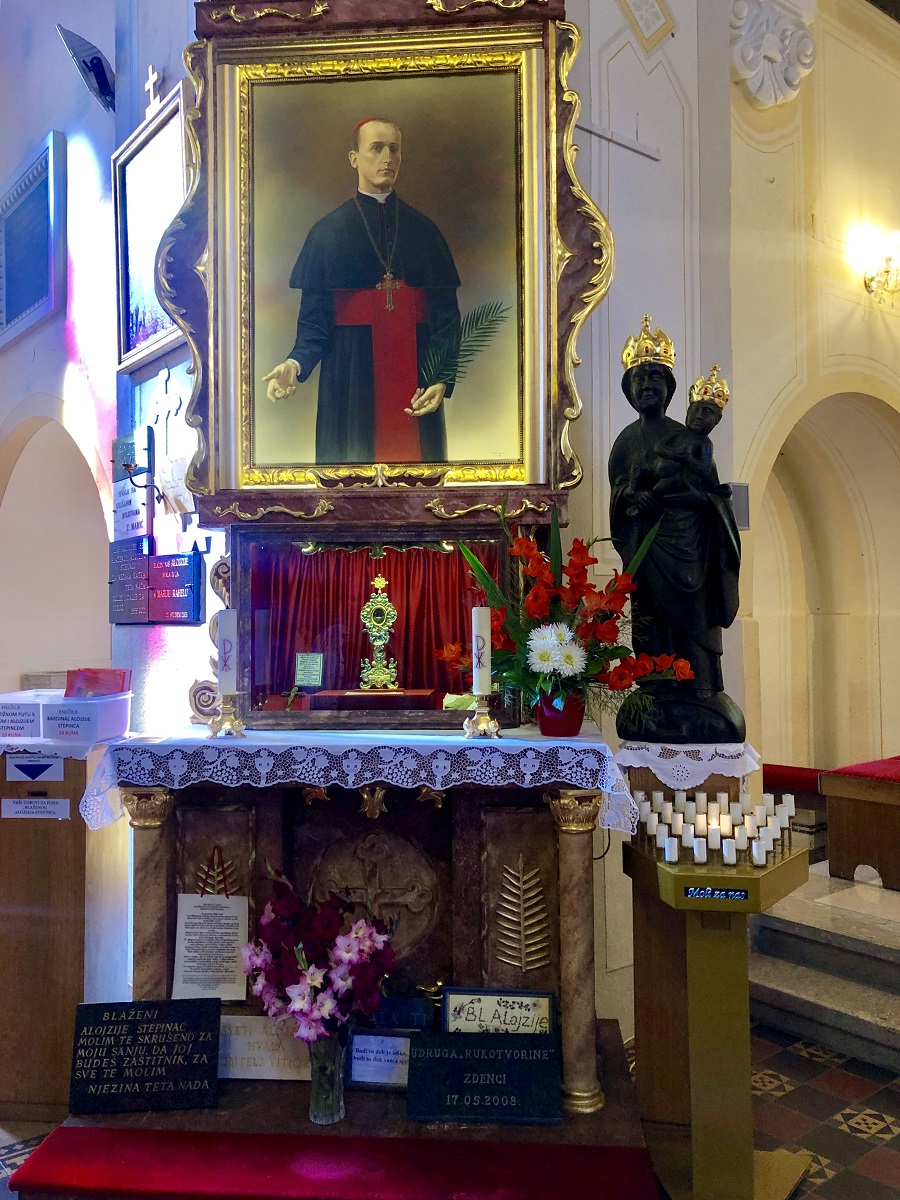
Visiting Istria was two of our most packed days on the trip. One of my favourite sites to see was in Krašić, when we had the opportunity to visit the home of Cardinal Stepinac. Led by Krašić’s local priest, Ivan Vučaq, we had the opportunity to see the chapel the Cardinal used when he was under house arrest and the bed he took his last breath on. Cardinal Stepinac was a very important man in history for our nation, and we all really enjoyed learning more about his life. Inside his home, we were shown photos and records of his trial which led to his arrest. Even though he is buried in the cathedral in Zagreb, his history lies in Krašić. Inside the local church, you can find a mantle devoted to him, with a handkerchief bearing his blood and the bone of his pinky finger inside a glass display.
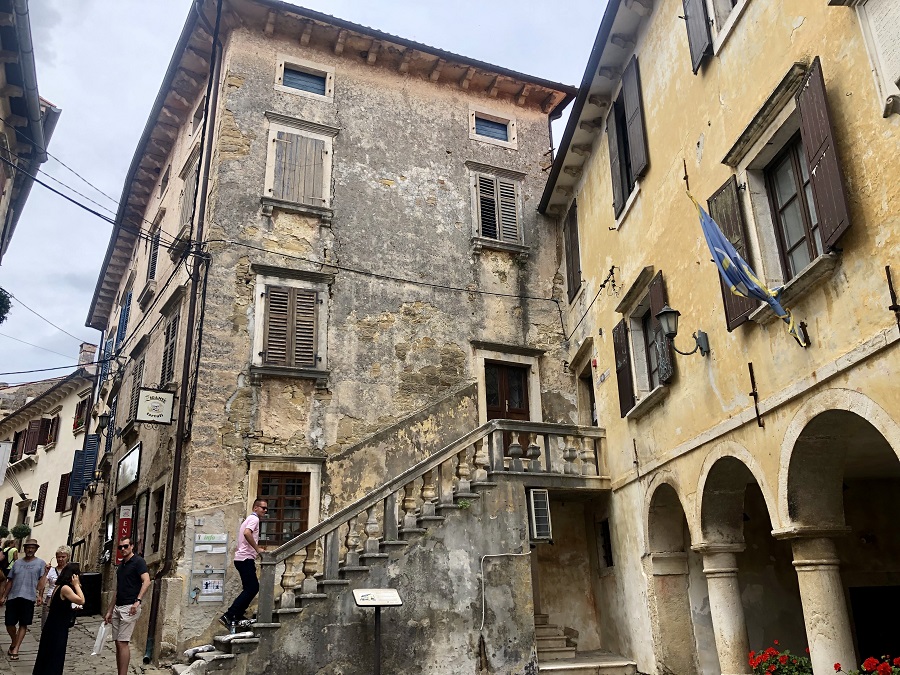
On our way to lunch, we visited Grožnjan, a city which takes up most of the Istra peninsula and the only settlement to have an Italian influence. After a quick tour of the town, we ate traditional dishes for the Istra area at Tavern Jadruhi just outside of Grožnjan.
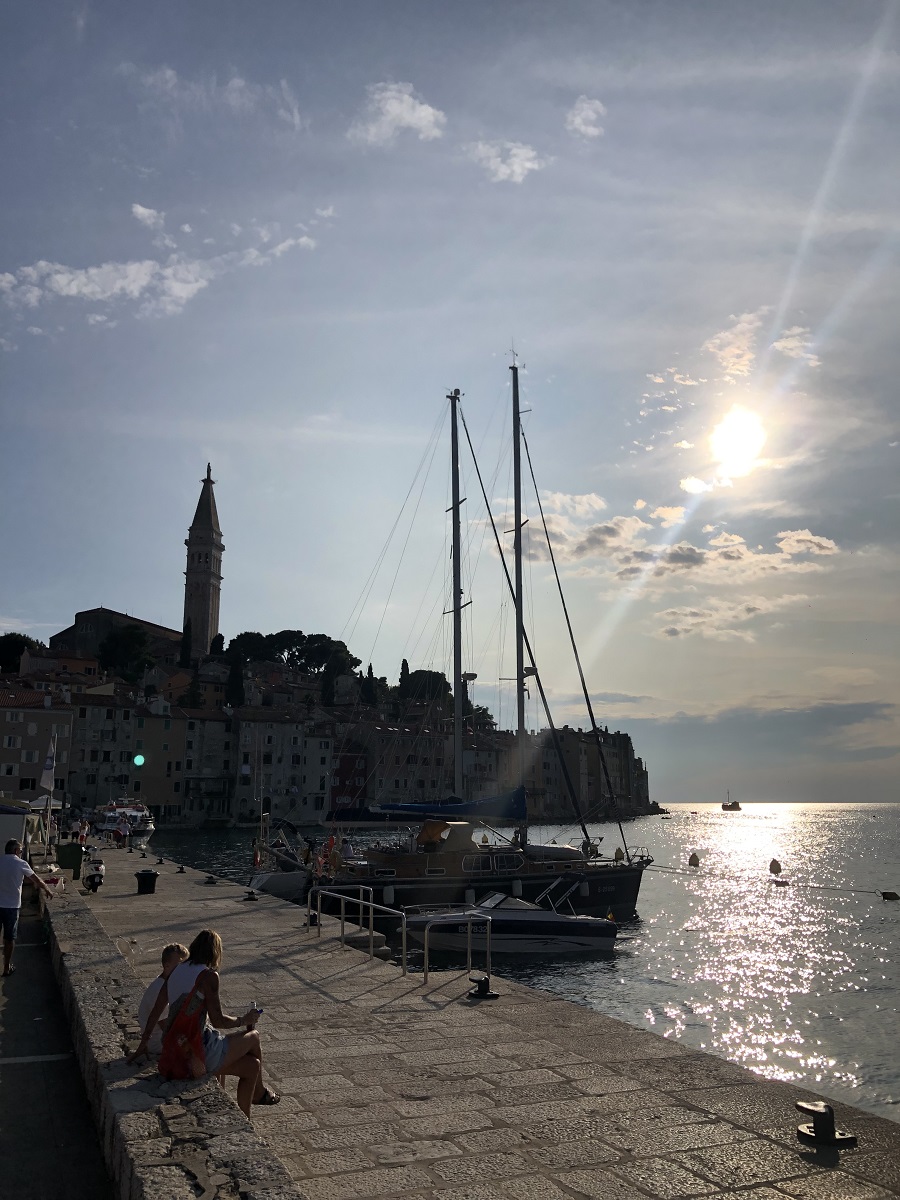
Grožnjan was beautiful, but my favourite city in the Istra region was Rovinj, which is where I wished we had the opportunity to spend more time! Nonetheless, I am glad we had a quick visit after lunch. It was my first time visiting Rovinj and I will definitely be back. Its cute quaint streets are so colourful and there are so many shops with amazing artists selling their art.
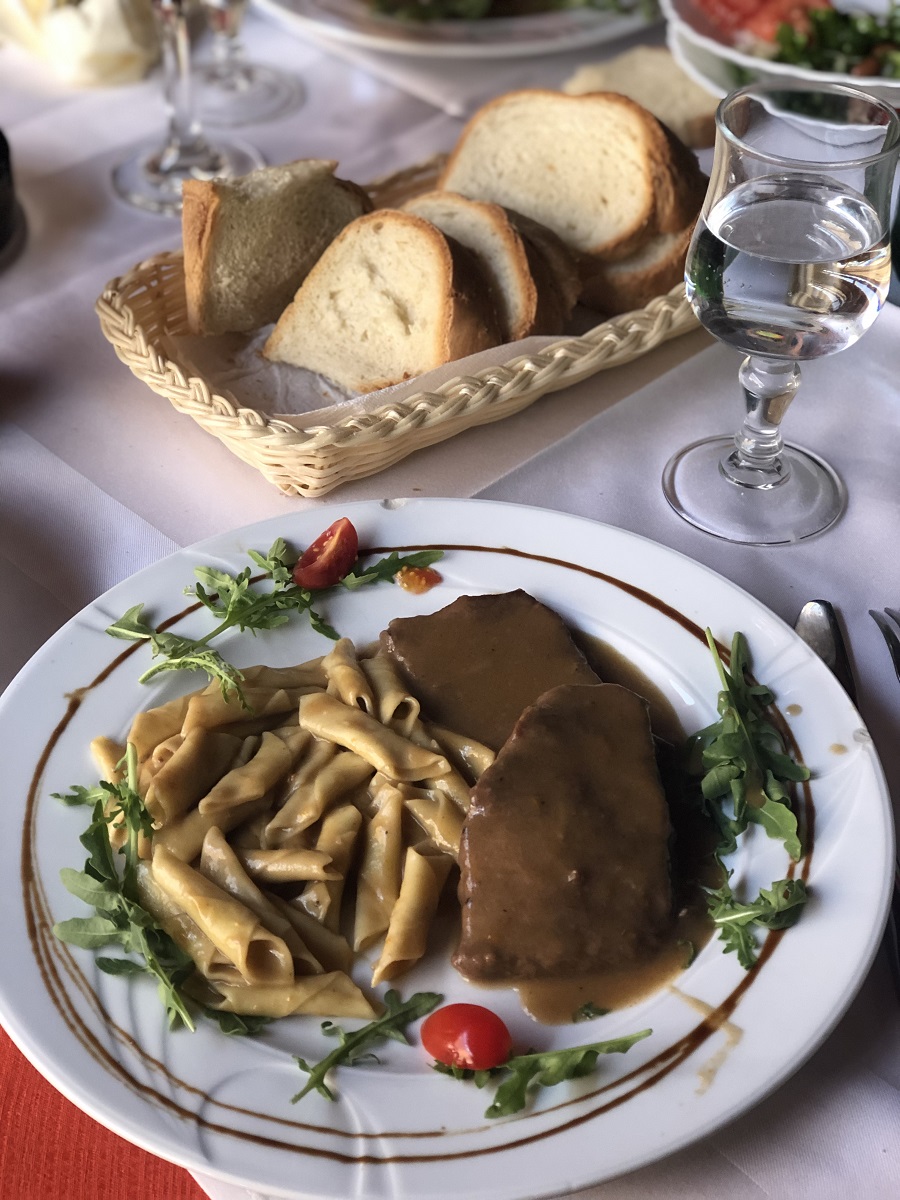
After Grožnjan, we drove to Pula where we were based to sleep and spent the next morning visiting the Pula aAena. Built in 27 BC - 68 AD, it is one of the last remaining Roman amphitheaters to have three architectural orders completely preserved and among six of the largest Roman arenas left standing in the world. I have visited the arena once before, but the opportunity to view it with a private guide made me appreciate the architecture and history of where once gladiators fought. Under the arena, in the subterranean tunnels, there is an exhibition of Roman objects and a display of how wine and olive oil were processed during that time. Today, apart from being one of Croatia’s largest tourist attractions, it is also used to host concerts. During our stay in Pula, the arena housed the Pula Film Festival, which is held there every summer.
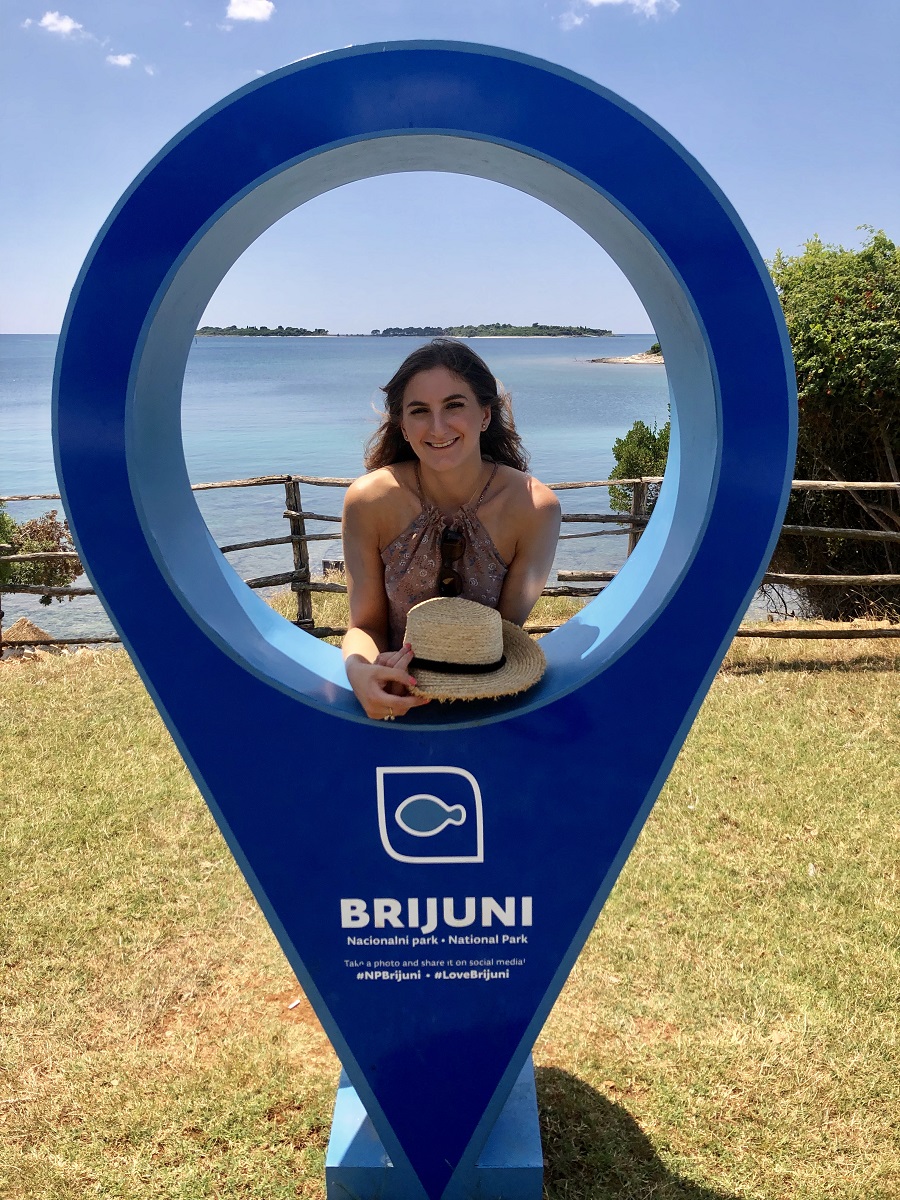
After concluding our tour, we arrived by ship to Brijuni National Park. Brijuni was another first visit for me and most definitely not my last. Its pristine waters made swimming amazing (but really, swimming everywhere in Croatia is amazing). Apart from getting a little time in the sun, we had refreshments and a meeting with the park board followed by a train tour of the island.
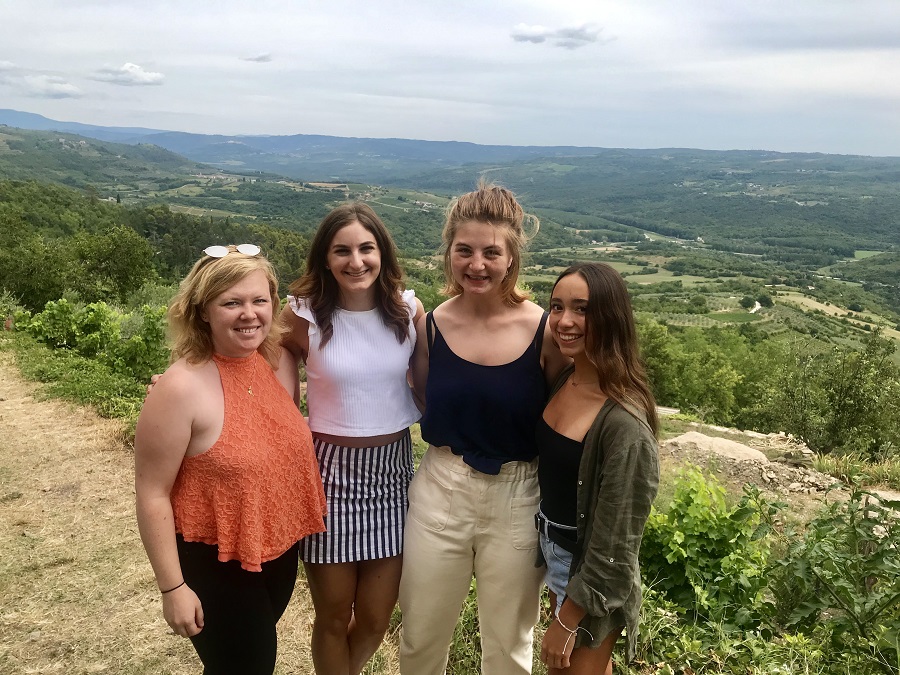
To end off our Istra adventure, we stopped in Bale for a tour before dinner back in Pula. Bale was another one of my favourite cities in the region. It is small, with only just over 1000 habitants, but holds a lot of character, showcasing elements of Venetian Gothic churches and medieval streets as a symbol of the Roman past. The church of St. Julian holds so much history beneath it, in its museum. My favourite part of Bale was the Soardo-Bembo Palace, a museum, but also holds the most amazing view from the top floor. I was lucky to end off our Istra visits from the windowsill of the palace to catch the beautiful sunset over the town!
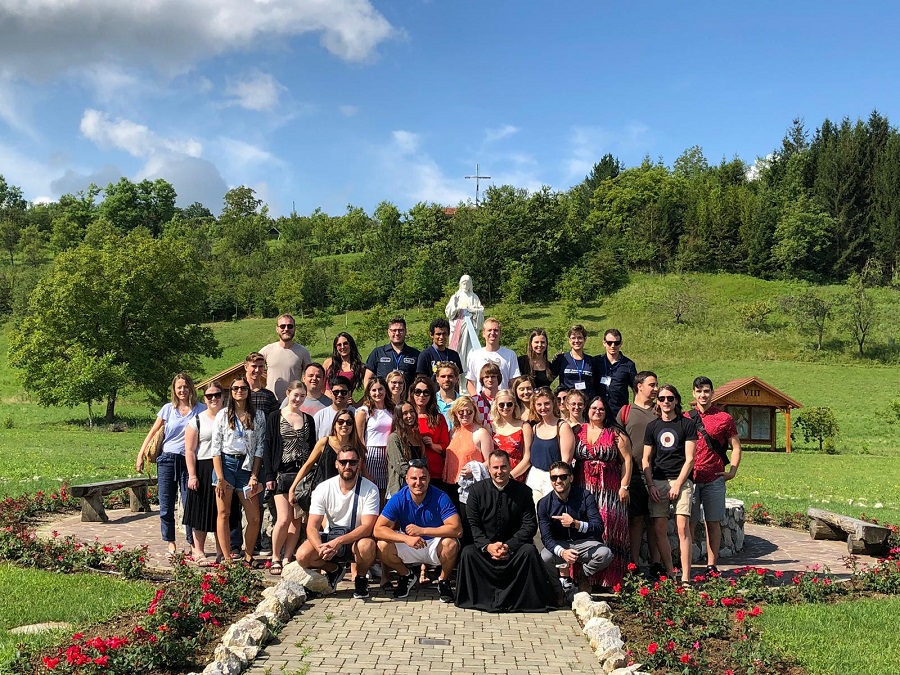
Next up: Smiljan and Knin!
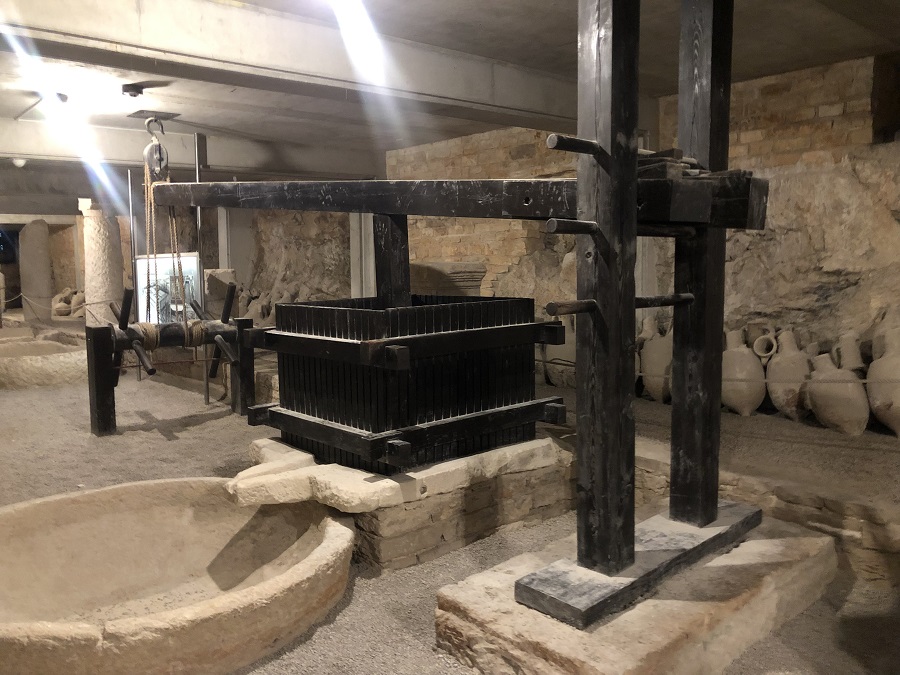
To follow the latest news from the Croatian diaspora, follow the dedicated TCN section.


